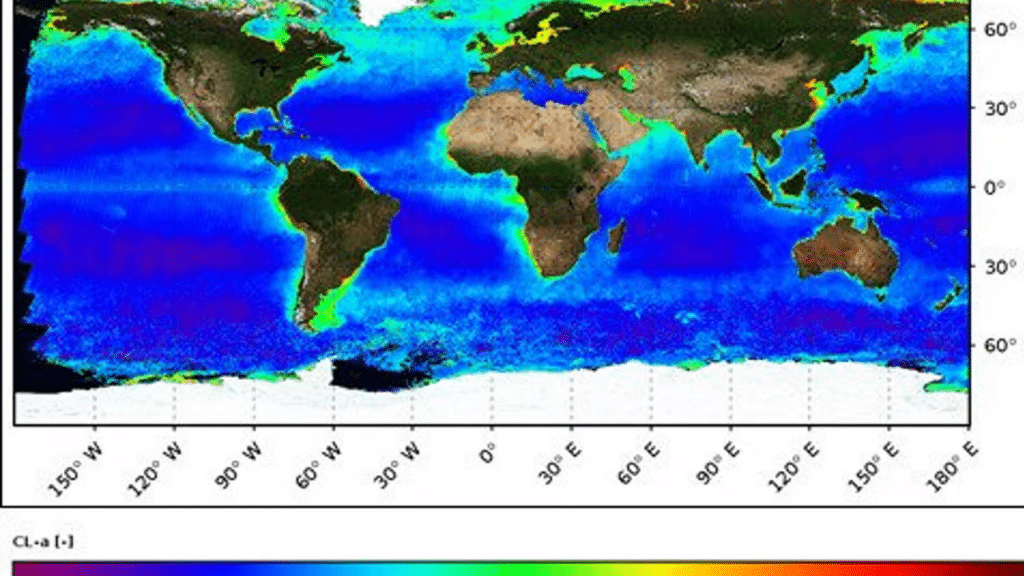The Indian Space Research Organisation (ISRO) has achieved a significant milestone with its EOS-06 satellite, which has successfully captured global phytoplankton concentrations at an impressive 1-kilometer resolution. This accomplishment offers a detailed view of these microscopic marine organisms, essential for understanding ocean health and the broader implications of climate change.
The Role of Phytoplankton in Marine Ecosystems
Phytoplankton are microscopic plants that form the foundation of the aquatic food web. Through photosynthesis, they produce a substantial portion of the world’s oxygen and serve as the primary food source for various marine creatures, from tiny zooplankton to large whales. Monitoring their distribution and concentration is crucial, as fluctuations can indicate changes in oceanic conditions, nutrient availability, and broader environmental shifts.
EOS-06: A Technological Marvel
Launched on November 26, 2022, EOS-06, also known as Oceansat-3, is part of ISRO’s ongoing commitment to oceanographic studies. The satellite is equipped with advanced sensors, including the Ocean Colour Monitor (OCM), which captures data in multiple spectral bands. This capability allows for precise detection of chlorophyll concentrations, providing insights into phytoplankton abundance and distribution.
High-Resolution Mapping: A Leap Forward
The recent global product generated by EOS-06 offers data at a 1km resolution, covering the period from January to December 2024. This high-resolution mapping enables scientists to observe fine-scale patterns in phytoplankton distribution, which is vital for understanding localized ecological processes and assessing the impacts of environmental changes.
Implications for Climate Change Research
Phytoplankton play a pivotal role in the global carbon cycle. Through photosynthesis, they absorb carbon dioxide, acting as a significant carbon sink. Changes in their populations can influence atmospheric CO₂ levels, thereby impacting global climate patterns. By providing detailed data on phytoplankton concentrations, EOS-06 aids researchers in monitoring these dynamics and predicting potential climate-related shifts.
Supporting Sustainable Fisheries and Marine Conservation
Understanding phytoplankton distribution is also crucial for fisheries management. Many fish species rely on phytoplankton-rich areas for feeding. By mapping these regions, EOS-06 provides valuable information that can assist in sustainable fishing practices and marine conservation efforts.
A Testament to ISRO’s Advancements in Space Technology
The success of EOS-06 underscores ISRO’s growing capabilities in satellite technology and Earth observation. By delivering high-quality data on a global scale, ISRO continues to contribute significantly to environmental monitoring and scientific research.
Future Prospects
Building on the success of EOS-06, ISRO plans to launch Oceansat-3A in 2025. This upcoming mission aims to further enhance ocean observation capabilities, providing even more detailed data to support marine ecosystem studies and climate research.

